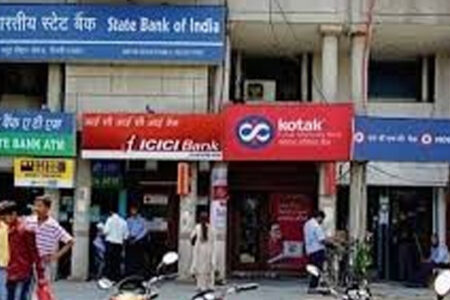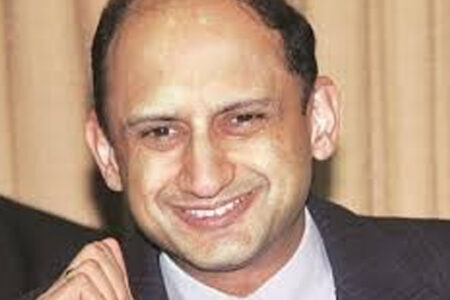Continuing its fight against rising inflation, the US Federal Reserve in the last week of July raised interest rates to a 22-year high. It raised the rates by a quarter percentage point to a range of 5.25-5.5 per cent after pressing the pause button at the previous meeting of its rate-setting body, the Federal Open Market Committee. This is the 11th rate hike in the current cycle, the Fed’s most aggressive rate-rising cycle in 40 years — from near zero to the present level.
US inflation has declined for 12 straight months and was running at 3 per cent in June, down from over 9 per cent a year ago, and the lowest in more than two years. After the latest hike, Fed chair Jerome Powell said the central bank was closely monitoring the economic data ahead of its next meeting in September. In other words, the future action will be data-dependent.
A day later, the European Central Bank announced a quarter percentage point rate hike, bringing its main rate to 3.75 per cent, completing a year of successive rate hikes in the eurozone since July 2022. The headline inflation dropped to 5.5 per cent in June from 6.1 per cent in May but it’s still far above the ECB’s target of 2 per cent. It did not share any forward guidance about its next move but the possibility of a potential pause (WORDS Deleted) in September is not entirely ruled out.
Last week, the Bank of England raised interest rates for the 14th time in a row to a 15-year high of 5.25 per cent from 5 per cent.
Meanwhile, Brazil’s central bank kicked off its rate-cutting cycle, reducing its benchmark interest rate by half a percentage point, and Australia’s central bank held interest rates unchanged at 4.1 per cent at its August meeting.
What will the Indian central bank do this week?
The annual consumer price index (CPI) inflation rate in India rose to a three-month high of 4.81 per cent in June, after dropping to its 25-month low of 4.25 per cent in May. The rise was driven by prices of vegetables and pulses.
The Reserve Bank of India (RBI) continued with the pause in June, which it had pressed in April, after raising its policy rate from 4 per cent to 6.5 per cent since May 2022 to fight rising inflation. The last time it hiked the policy rate was in February — by a quarter percentage point, the lowest since the rate-hiking cycle started in May 2022. That took the policy rate to 6.5 per cent, last seen in February 2019 when the CPI inflation was 2.57 per cent.
While raising the rate in February, the policy statement had not offered any forward guidance. In the post-policy press conference, RBI Governor Shaktikanta Das simply referred to a “mood of optimism”.
The optimism continued through the April policy and, in June, the RBI found “the uncertainty on the horizon appears comparatively less and the path ahead somewhat clearer”. It also highlighted that “the Indian economy and the financial sector stand out as strong and resilient in a world of unprecedented headwinds and swift cross-currents”.
That story continues but, blame it on tomatoes (and other vegetables and pulses), the inflation outlook has changed since the last policy. Some analysts expect it to be around 6.5 per cent in July and remain elevated in August, too. While the core inflation or the costs of goods and services, excluding food and energy sectors, remains benign, the food inflation outlook has changed. At the initial stage, the monsoon was below normal but, as I write this column, it has turned out to be better than the long period average even as rainfall across regions is quite uneven.
A recent ICICI Bank research note says the impact of the current rainfall is likely to disrupt production and prices of tomatoes till September when the prices are expected to ease. While tomato prices were higher by 64.5 per cent in June over May, the uptick in July was even higher at 210 per cent, over June. This will push food inflation higher in the next few months. And, tomato alone is not the villain of the piece. The prices of rice, pulses and spices, too, are witnessing upward momentum.
While global commodity prices are no threat to the core inflation, oil prices are inching higher because of tightening supply by OPEC.
Against this backdrop, analysts have gone back to the drawing board and raised their inflation estimate for the year. At the last policy, the RBI marginally pared its CPI inflation for FY24 to 5.1 per cent from 5.2 per cent in June. It pegged the inflation projection for the first quarter at 4.6 per cent, 5.2 per cent for the second, 5.4 per cent for the third and 5.2 per for the fourth quarter cent with “risks evenly balanced”.
It’s for sure that CPI inflation in the second and third quarters of FY24 will be higher than the RBI projection.
At this juncture, will the RBI go for a rate hike? In June, the governor made it clear that the pause was meant only for that meeting and further monetary actions would be taken promptly and appropriately as required to keep inflation expectations firmly anchored and bring down inflation to the target. I don’t bet on a rate hike this week. The RBI will opt for status quo both for the rate as well as the stance — which is withdrawal of accommodation — while keeping a hawk eye on inflation.
The RBI’s flexible inflation target is 4 per cent plus/minus 2 percentage points. In the aftermath of the pandemic, it was tolerating inflation at the higher end of the band. Now, the focus is on bringing down the inflation to the 4 per cent target, on a durable basis to ensure sustainable growth.
The stance will remain as withdrawal of accommodation since core liquidity in the system, including the government cash balances, is around Rs3.6 trillion. The three contributing factors to the liquidity are withdrawal of Rs2,000 currency notes, RBI’s dividend payment to the government Rs 87,416 crore and the central bank’s purchase of dollars from the market. For every dollar it buys, an equivalent amount of rupee flows to the system. On August 1, the RBI mentioned that 88 per cent of Rs2,000 banknotes (Rs3.14 trillion of Rs3.62 trillion in circulation in March) had returned to the system. The window for depositing such notes closes on September 30.
The RBI has committed to remain nimble in its liquidity management, ensuring that adequate resources are available for growth and the orderly completion of the government’s record Rs15.43-trillion gross market borrowing programme in FY24.
The RBI left its estimate for the real gross domestic product growth for the year unchanged at 6.5 per cent in June. It is unlikely to change the growth estimate but will it change the CPI inflation estimate for the year?
In June, while paring it marginally, the RBI had said that there could be a 10-12 basis point (bps) impact on the estimate on account of the hike in the minimum support price of paddy, even though part of the hike has already been built into the projection. It can either raise its inflation projection marginally or leave it for the time being while emphasising on its determination to bottle it up. One bp is a hundredth of a percentage point.
The pause will continue for now with the RBI’s readiness to act if the need arises. The change in stance, too, is unlikely to happen soon. We may have to wait for the first rate cut till next the financial year, beginning in April 2024. The stance will change ahead of that but I won’t expect it at the next policy in October.
This column first appeared in Business Standard
The columnist is a Consulting Editor with Business Standard and Senior Adviser to Jana Small Finance Bank.
His latest book: Roller Coaster: An Affair With Banking
Twitter: TamalBandyo
Website: https://bankerstrust.in



